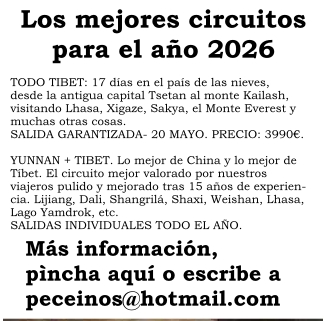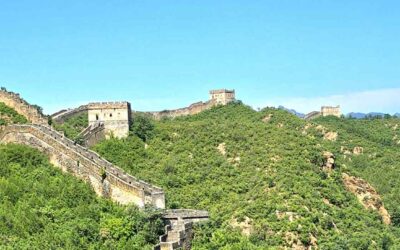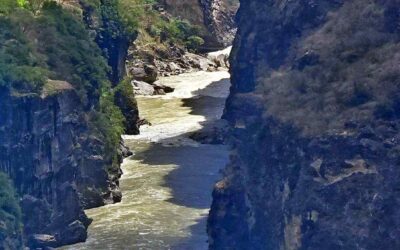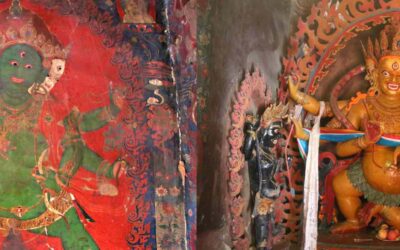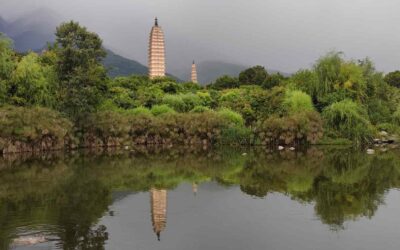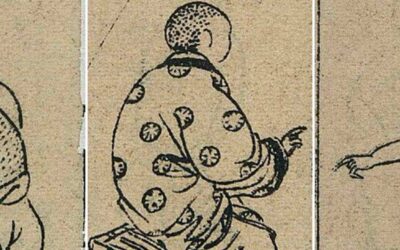The Dong are one of the minorities of China with a large population. According to the census of the year 2000 their population was 3,000,000 people.
They live mainly in Guizhou Province (approximately 1,800,000 people), along a fringe of flat lands that cross the province from north to south. There is also a big Dong population in the southern part of neighboring Hunan Province (about 900,000), and more than 200,000 persons in Guangxi Zhuang Autonomous Region, and a few thousand in Hubei Province (Enshi Prefecture).
The Dong, as do most of the peoples related to them, live near the rivers or in hills generally not of great height. They mainly cultivate rice. They raise domestic animals, especially hens and pigs. The exploitation of the forests, which holds a special spiritual relationship with the Dong, is an activity of economic importance.
They refer to themselves as «Kam.»
It is generally considered that there are two quite different types of Dong, the Dong of the North and the Dong of the South.
There are important linguistic and cultural differences between them. In general those of the north have received more influences from mainstream Chinese culture, while those of the south better conserve the Dong traditions. The typical monuments of the Dong, such as Drum Towers, Bridges of Rain and Wind, and the Temples of the Goddess Mother Sama, are all characteristic of the Dong of the South.
Their language belongs to the Sino-Tibetan family, Dong Dai branch, Zhuang Dong sub-branch. It has two main dialects, understandably called the northern and southern dialects, whose speakers cannot understand each other easily. Each one of these dialects has in turn three clearly differentiated local sub-dialects.
After 1958 an alphabet was invented for their language, but it has not been widely used. Before 1958, they used Chinese characters adapted to their own language.
More posts on China ethnic groups
Por qué hay que estudiar el suicidio en la cultura china
Por qué hay que estudiar el suicidio en la cultura china Mientras redactaba nuevos textos que formarán parte de mi Historia mínima de China, me aparecían suicidios en las más diversas circunstancias. Ministros y esposas que se enterraban voluntariamente para acompañar...
El verdadero origen de la Gran Muralla
El verdadero origen de la gran muralla. Algunas ideas expuestas por Nicola Di Cosmo (The Origins of the Great Wall. 1993) En términos generales, el discurso político sobre los extranjeros en la China preimperial tiende a justificar la expansión y la conquista, que es...
La Garganta del Salto del Tigre, una caída de 3.000 metros sobre el río Yangtzé
La Garganta del Salto del Tigre, una caída de 3.000 metros sobre el río Yangtzé El río Yangtzé es el más largo de China, y con sus 6.300 km es el tercero más largo del mundo. Es la arteria vital de China y desde su origen, en el altiplano tibetano, recorre con ciertos...
Parnashavari. La diosa tibetana de la medicina
Parnashavari. La diosa tibetana de la medicina. Dentro de la compleja simbología de las deidades y protectores tibetanos, me gusta ir buscando algún detalle que permita identificar claramente a un personaje desde el primer momento en que le vemos en un templo. Una de...
Viaje-Todo -Yunnan
TODO YUNNAN - EL CAMINO A SHANGRILÁ DESCARGA AQUÍ EL PROGRAMA ILUSTRADO Día 1. Kunming. Traslado al hotel Grand Park. Día 2. Kunming- Shilin. Desayuno. Alojamiento Htl Yinruilin Empezamos las visitas de Kunming. Nos dirigimos primero al Templo Yuantong, el más...
La Diosa de la Viruela Doushen
La Diosa de la Viruela Doushen La Diosa de la Viruela (Doushen痘神) forma parte de una serie de diosas encargadas principalmente de la protección de los niños, que en los últimos años del régimen imperial actuaban bajo la dirección de Bixia Yuanjun, hija del Emperador...

